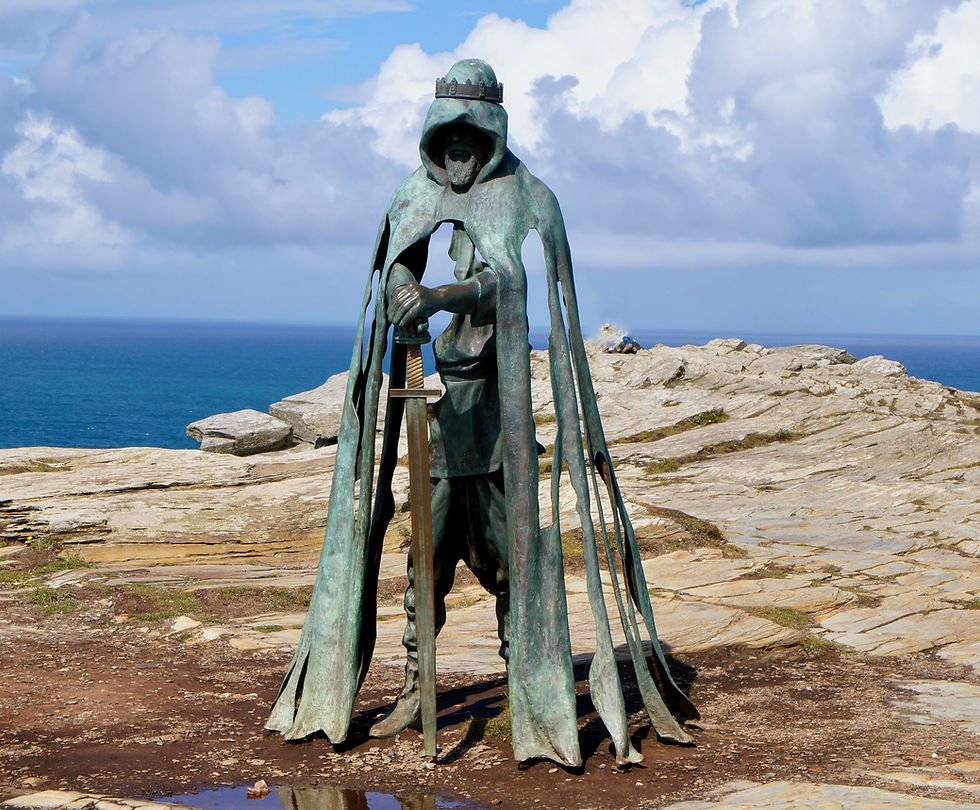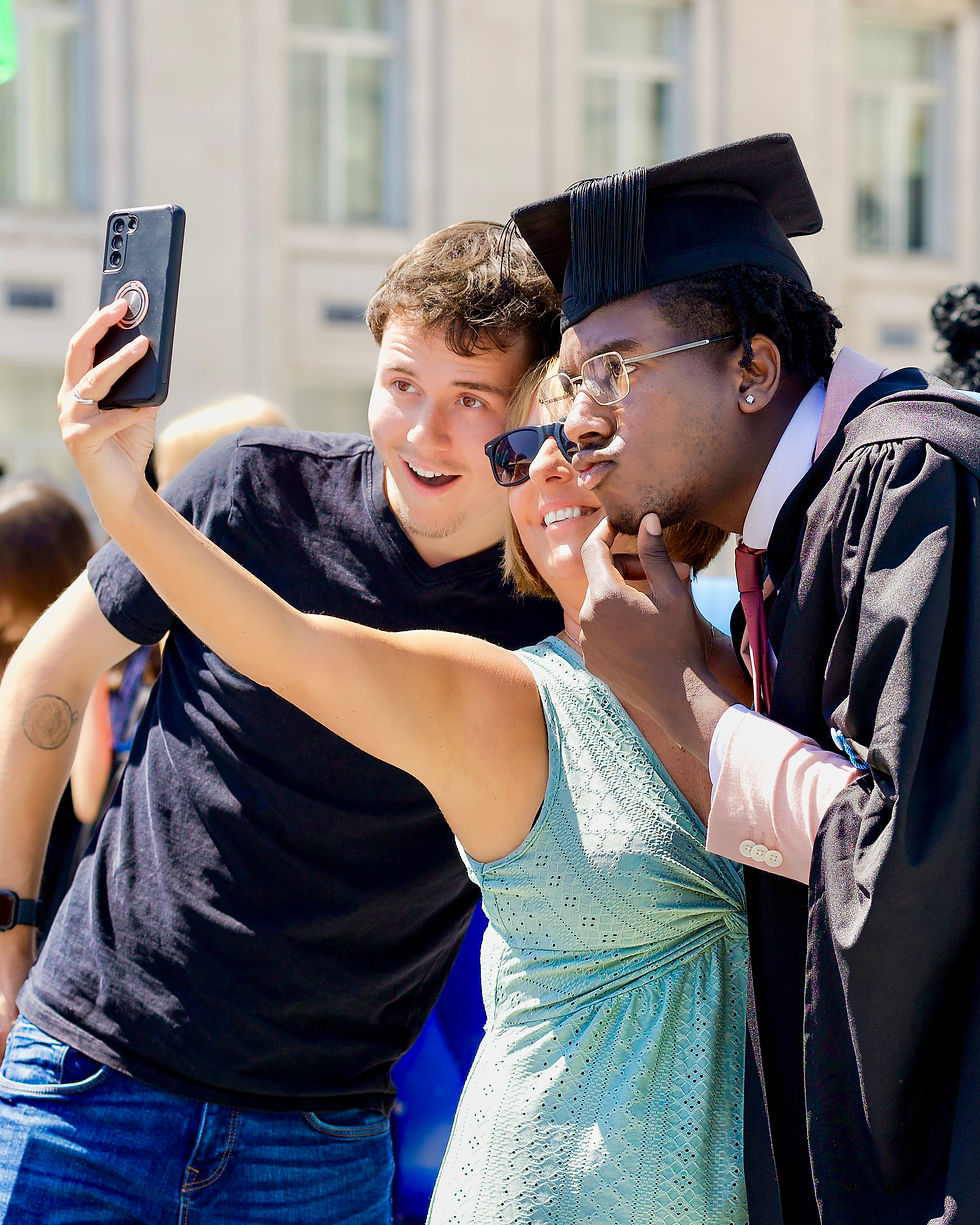
When Not to Shoot: The Ethics of Street Photography (And Why Pigeons Don’t Care About Consent)
- Darren Byrne
- Aug 17
- 4 min read
Street photography comes with a funny kind of power. You’ve got this little black box in your hands that can freeze people forever — a glance, a scowl, a laugh, or a badly timed sneeze that looks like an exorcism. And with that power comes the eternal question: just because you can take the shot, should you?
I’ve been stopped, shouted at, and once given the kind of glare that could curdle milk. None of which kept me awake at night — but it did get me thinking. There’s the legal side of street photography in the UK, which is fairly generous in public spaces, and then there’s the ethical side, which is murkier than the bottom of a pint left out overnight.
Every negative reaction I’ve had to street photography has been born from ignorance — either of what it is, or of the law. But the goal should never be to provoke or stir controversy. Universally, that kind of behaviour is unacceptable, no matter what the law technically allows.

⸻
Why I Shoot
At its core, street photography isn’t about perfection; it’s about presence. It’s less about the backdrop and more about the fleeting human moments, gestures, and interactions that reveal something authentic about society, culture, or the human condition.
My goals are simple:
• Telling stories through single images or sequences.
• Capturing truth — those unfiltered moments that reflect real life.
• Exploring human nature, society, and culture in visual form.
• Eliciting emotion in the viewer — empathy, humour, nostalgia, or curiosity.
• Finding beauty in the ordinary — transforming everyday moments into something remarkable.
Those goals shape my ethics, because the story only matters if it respects the people inside it.
⸻
Legal ≠ Ethical
On paper, I can photograph anyone in a public space. The law is on my side. But ethics? Different story. Photographing a guy picking his nose on a park bench isn’t illegal, but it’s hardly the proud legacy I want my work to leave behind. Same goes for someone having a private moment of grief, or a teenager mid-argument with their parents. Just because I can doesn’t mean I should.
⸻
Vulnerability and Respect
For me, there are red lines. Someone asleep rough on the street? That’s not a photo — that’s someone’s life. Someone clearly upset? Same rule. Responsible street photography can tell truths, but it doesn’t have to do it at someone else’s expense.
I’ve even been accused of “photographing someone’s pain.” It wasn’t pain — it was honesty, a sliver of life as it was. But it reminded me that the camera cuts both ways: it captures, but it can also misinterpret. Truth is open to interpretation, but respect has to come first.
⸻
The Power Balance
Pointing a camera at someone shifts the balance. You become the one with control. Some people shrug it off, some bristle, and some storm over demanding to know what you’re doing (true story: the storming over is usually less cinematic than it sounds).
For you, it might be just another shot. For them, it could feel like exposure they never asked for. I try to think: if our roles were reversed, would I be okay with this? If the answer’s no, the shutter stays quiet.
⸻
My Personal Rules
Every photographer develops their own code. Mine’s simple:
• I don’t shoot if it feels like punching down.
• I don’t shoot kids who can be identified without permission.
• I don’t photograph people who are visibly disabled.
• I don’t shoot people who clearly don’t want to be photographed.
• And if someone asks me to delete a shot — I delete it. Easy.
The reality is, street moments often last a fraction of a second — there’s no time to weigh every ethical consideration before I click the shutter. Most of my judgement happens later. If I review an image and it feels wrong — morally, not technically — I delete it and move on. That’s my clean-conscience policy.
For every photo I take, there are dozens I don’t — simply because something about them feels questionable.
Any image left unedited after two weeks? Deleted. Once a month, I also completely format my SD cards. It keeps me decisive and stops my hard drives from turning into a graveyard of “maybe” shots.
⸻
The Shots That Matter
Even so, sometimes discomfort is necessary. Some of the most important photographs in history weren’t polite. They were raw, confronting, even uncomfortable to look at. Protest, poverty, injustice — they need witnesses.
My style leans towards documentary street photography, which means I sometimes brush dangerously close to that moral line. The truth is, that tension excites me — but it also troubles me. The line, for me, is intent. Am I telling a story that matters, or am I just gawking with a lens?
⸻
The Feathered Disclaimer
Of course, pigeons don’t care. They’ll strut into frame like they own the place, throw you a look that says “get my good side,” and then fly off mid-click. If only people were that easy to deal with. Then again, people don’t poop on statues nearly as often, so maybe it’s a fair trade.
⸻
Closing Thoughts
Street photography is full of choices. The frame you take is important, but so is the frame you don’t. Sometimes the most powerful image is the one that stays unshot, the one you let pass out of respect.
That’s my line. Where’s yours? How do you handle the ethics of street photography in the UK? Drop it in the comments — I’d love to hear your take.



Comments